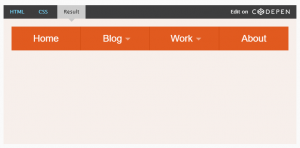More than half the global population will have Internet access by this year, according to the State of Broadband report 2014. And with this wave of new users comes an influx of digital newbies, spanning multiple generations.
With web users including a larger variety of age groups than ever before, new UX factors need to be considered. Design elements already adapt to accommodate users accessing the web on a variety of devices. But responsive design shouldn’t stop there.
So much more can be done to enhance the user experience, tailoring it to meet users’ needs based on even more specific criteria. And one of these criteria is the user’s relative age.
Age-Responsive Design – The Next Phase In UX And Web Performance
“Online advertising has already been tailoring its content to the specific interests of the user for quite some time, and soon sites will be doing just the same; an 8-year-old and an 80-year-old don’t read the same books or watch the same television, so why do they share the same online experience?” says Chase Buckley.
Different age groups have varying needs, preferences, and reactions when it comes to content, web layout, and design aesthetics. And so, through the use of metadata, age-responsive web design helps companies better cater to and connect with their customers.

But what kinds of age-specific adaptations can metadata inform on websites?
Well, for starters…
Expandable Navigation Menus
Navigation menus can expand and contract depending on visitors’ perceived web capabilities. For instance, older visitors are likely to spend less time online and may be less familiar with ecommerce than younger users.
Therefore, older users may have more trouble navigating detailed interfaces with lots of features. So a bare-bones version, including only the essentials, would be easier for them to interact with and better suit their needs.

Adaptable Typography
Naturally increasing the font size and the amount of space between text rows significantly enhances a website’s readability for older visitors, who are more apt to experience vision issues.
Changing Color Schemes
According to Chase Buckley, younger visitors respond better to websites with brighter, saturated hues while older visitors prefer more muted palettes, like soft pastels.

A Combination Of Video Content And Text
Younger visitors gravitate towards video presentations. And older visitors prefer text-based information. So presenting content in a variety of formats is a good strategy to meet visitors’ needs from varying age groups.
There’s No Such Thing As A “Perfect User” Anymore
Good web design keeps visitors in mind. However, web design also typically assumes that most visitors are tech-competent “with a pre-existing understanding of generic website functionality.” In other words, when visitors arrive at a website, they more or less know how to find what they’re looking for.
But with more and more people accessing the Internet, this is not always the case. For users who are both older and much younger (users not born between 1970 and 1995—i.e. non-millennials), certain web functions may not be so intuitive.
“Age-Responsive Design would allow every user to feel like the perfect user, like the website was designed for them. In turn, this would make websites that much more effective by making it easier for users to find the information they want, and eliminating confusion and frustration,” says IdeaAssociates.com.
Of course, not every business needs or wants to target each age range. Larger brands may want to appeal to a wider customer base. But most smaller companies can focus on specific age groups. For instance, a company providing in-home care to senior citizens doesn’t need to appeal to millennials or Gen-Z.

But in any case, age-responsive design helps you hyper-target your website. And this allows you to more efficiently cater to your audience’s needs.
What do you think about age-responsive web design? Is it something you plan to implement with your own website?




